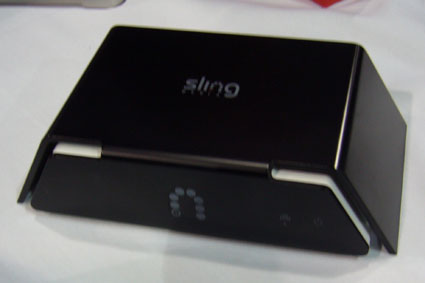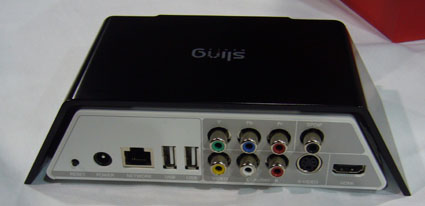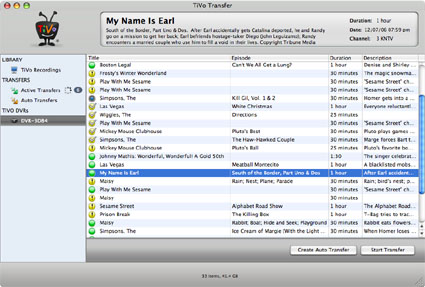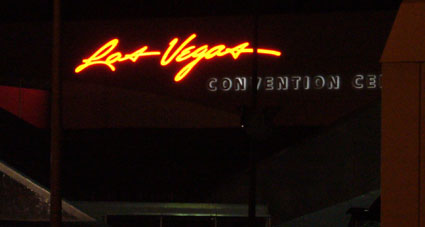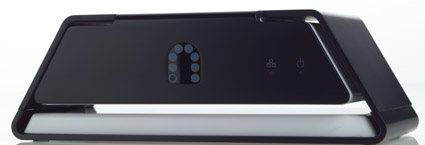Last night at the Digital Experience sideshow over at Caesars (featuring piles o’ crab cakes and lobster spring rolls), I spent a few minutes with the Sling folks and touched some of the new stuff. The PalmOS player seems entirely functional (we connected to a Slingbox broadcasting from the Golden Gate Bridge?!), though the skin/GUI isn’t complete. I also got a closer look at the SlingCatcher. The flat white piece in the third photo is the optional hard drive accessory that the Catcher will sit on (it looks like they’ll connect via USB).
I have a thorough briefing planned this AM by the Sling folks, though they slipped and let me in on to two pretty interesting announcements coming: one today, one tomorrow. I’ll share more when I get a bit more info and clearance to post.
